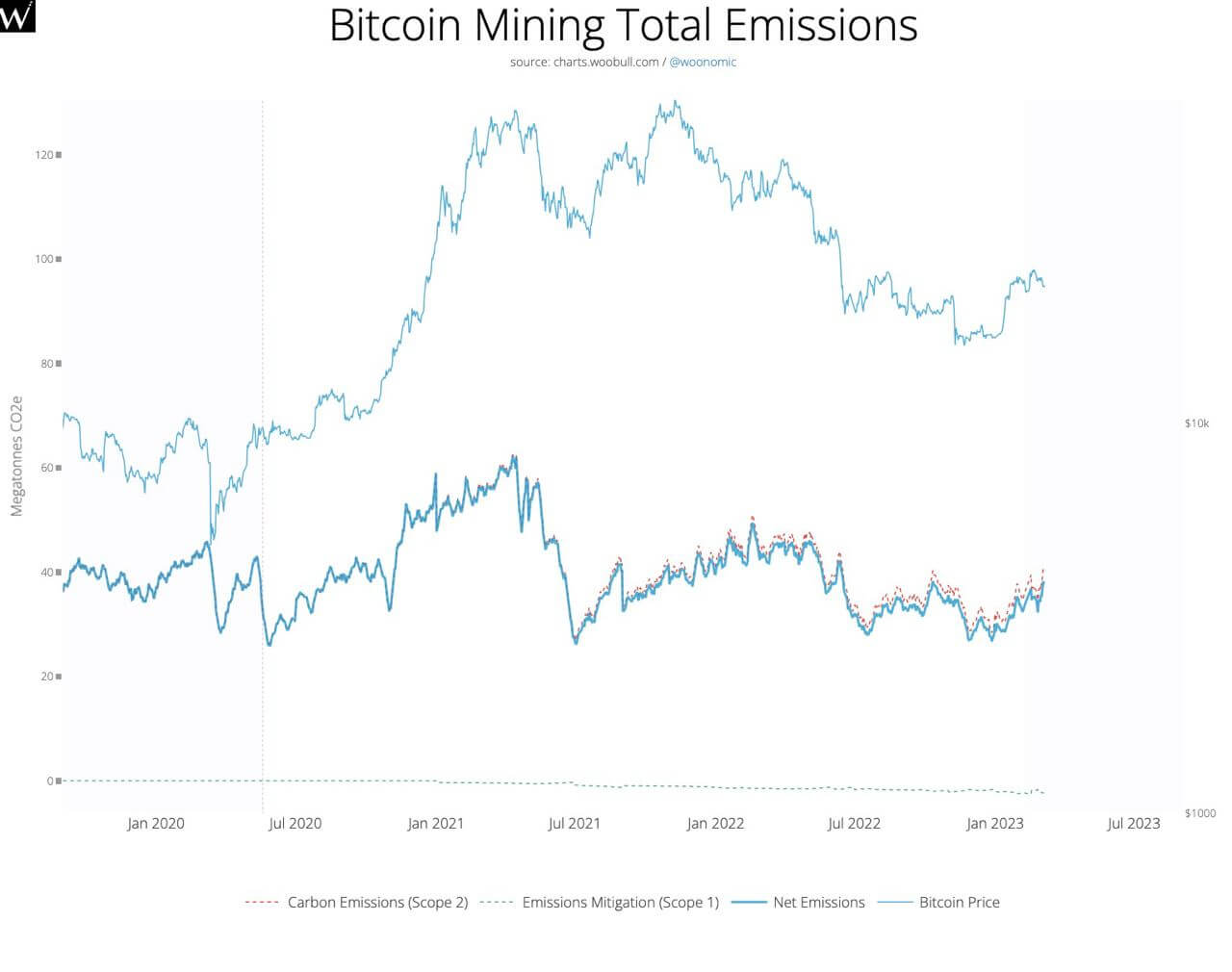Miners that use sustainable energy sources accounted for 91.3% of Bitcoin (BTC) mining during the first two months of the year, according to data shared by Climate Tech Vice President Daniel Batten.
Batten noted that Marathon Digital migrated around 300 Megawatts from thermal power to wind power in January, which made a significant contribution to the above metric. In addition, Batten said that the network emissions had also been declining, despite increasing hash rate, which leads to higher power consumption.
Declining network emissions
In addition to Marathon Digital’s migration, China’s and Khazakhstan’s actions significantly contributed to the decline recorded in network emissions, according to Batten.
China
China banned crypto mining in May 2021. At the time, the country accounted for over 75% of the global BTC hash rate. Batten noted that mining in China was only 41.6% sustainable at most. Therefore, the country’s decision to ban crypto mining considerably affected network emissions.

The chart above demonstrates the net emissions of the BTC network with the dark blue line. A clear drop in emissions is visible after China’s banning decision in May 2021. Even though the total network emissions recorded a slight growth since then, the overall trend has been downwards, and the total emission amount has never reached its levels before China’s ban.
Kazakhstan
Kazakhstan emerged as the mining heaven due to its cool climate and rich coal resources and grew to account for 18% of the global hash rate in late 2021. The coal-reliant mining in the region had a considerable contribution to the overall gas emissions of the BTC network.
However, Kazakhstan turned its back on its miners after an energy crisis hit the country at the end of 2021. To halt high-energy-consuming mining operations, the country cut off miners’ power supplies, tightened regulations on their energy consumption, and introduced a differentiated tax rate based on the energy consumed by miners.
As a result, Kazakhstan’s fuel-based mining operations decreased by 11.6%, which increased the sustainable energy usage of the overall network by 2.9%.
The U.S.
Batten also noted that zero-emission energy resources power 52.8% of the mining operations in the U.S. This is meaningful, considering that while the mining operations in China and Kazakhstan have been decreasing, the USA’s has recorded an increase.
Data from October 2022 showed that two…
Click Here to Read the Full Original Article at Bitcoin (BTC) News | CryptoSlate…
























